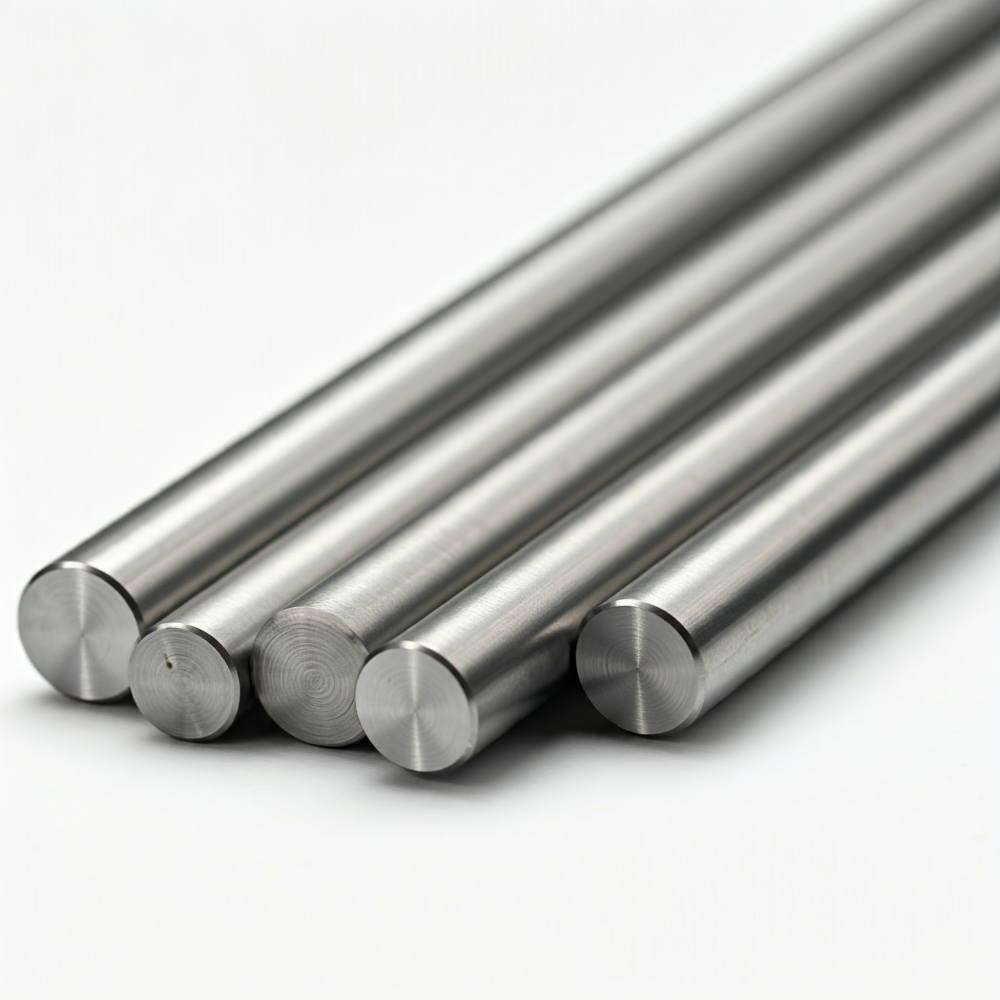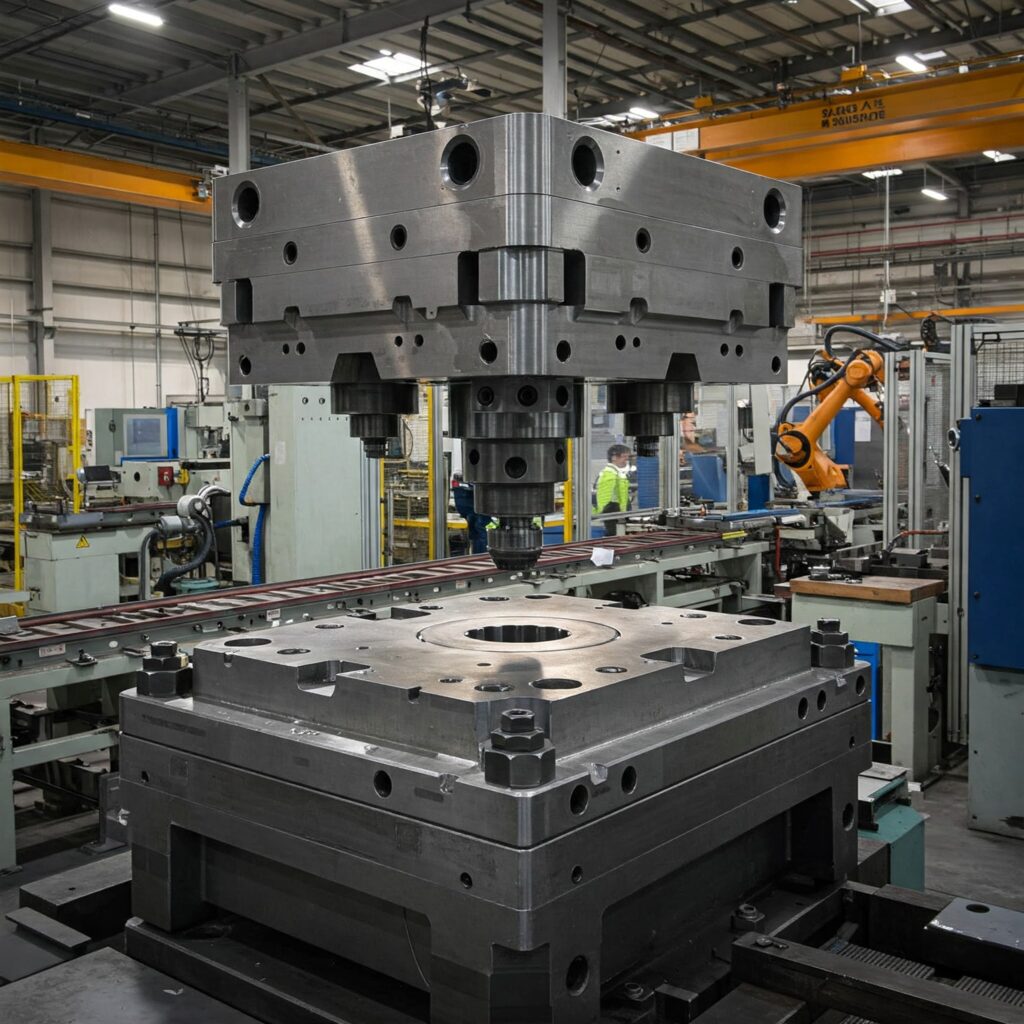Estimated reading time: 11 minutes
Key Takeaways
- O1 steel is an oil-hardening tool steel ideal for cold working, requiring precise heat treatment for optimal performance.
- Key steps in the O1 Steel Heat Treatment Guide include preheating, austenitizing, quenching, and tempering to achieve the desired hardness and toughness.
- O1 Steel’s chemical composition, particularly its carbon and manganese content, significantly impacts its mechanical properties and resistance to wear.
- Despite its advantages, O1 steel has limitations like low resistance to elevated temperatures and susceptibility to decarburization and cracking during heat treatment.
- Proper control of thermal processes and avoiding design flaws are essential to prevent deformation and ensure the successful heat treatment of O1 steel.
Table of contents
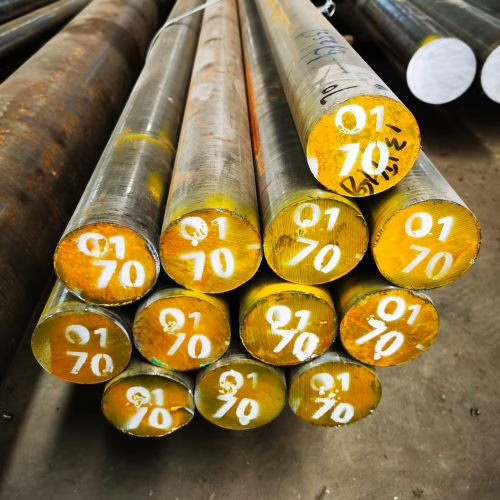
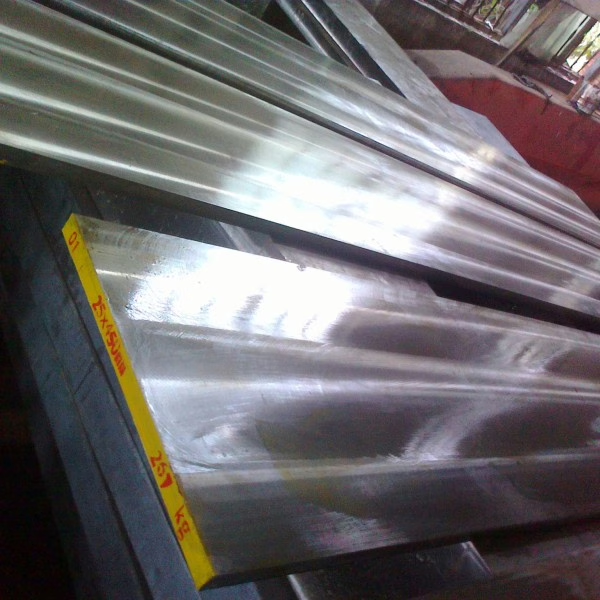
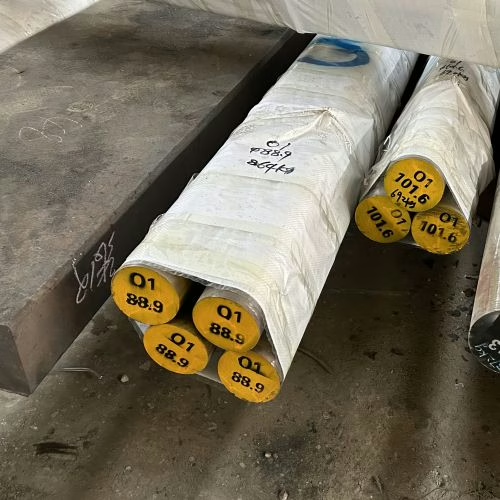
O1 tool steel is a primary material in cold working applications, widely used in the manufacture of various molds and tools. Its designation “O” indicates that it is an oil-hardening steel. The exceptional potential of O1 steel can only be fully realized through heat treatment. The ultimate performance and service life of a tool entirely depend on the precision of the heat treatment process. If process control is inadequate, the material’s properties will be significantly compromised.
To achieve optimal mechanical properties, the heat treatment process for O1 must strictly adhere to four consecutive critical steps:
- Preheating: Prepares the material for subsequent high-temperature heating and reduces thermal stress.
- Austenitizing: Heating above the critical temperature to induce a transformation in the internal structure of the steel.
- Quenching: Typically, rapid cooling in oil to achieve high hardness.
- Tempering: Reheating to a lower temperature to adjust hardness, eliminate brittleness, and enhance toughness.
The objective of the entire process is to achieve an ideal equilibrium state for O1 tool steel by precisely controlling parameters such as heating duration, temperature, and cooling medium. This equilibrium ensures the steel possesses high hardness, high wear resistance, and sufficient toughness to meet the demands of demanding cold working environments.
Understanding O1 Tool Steel: Classification, Composition, and Core Properties
O1 tool steel (UNS number T31501) is a member of the oil-hardening cold-work tool steel family. It is known in the industry as the “workhorse” or “general-purpose” steel, easily available and relatively inexpensive.
Chemical Composition and Its Impact on Performance
The ideal performance of O1 stems from its precise combination of high carbon content and moderate levels of alloying elements.
- Carbon (C) – 0.85% to 1.00%: This is the core element of O1 steel. Such a high carbon content forms the basis for its ability to develop a high-hardness martensitic structure after quenching.
- Manganese (Mn) – 1.00% to 1.40%: Manganese plays a crucial role. It effectively stabilizes the austenite phase and lowers the critical transformation temperature (A1). This allows O1 steel to achieve hardening through quenching at relatively low temperatures.
- Tungsten (W) and Chromium (Cr) – 0.40% to 0.60% each: These elements are primarily used to enhance durability. Tungsten (W) contributes to the steel’s high abrasion resistance and sharp cutting edges. Chromium (Cr) also significantly enhances hardenability and wear resistance.
- Vanadium (V) – typically up to 0.30%: Serves as a supplementary alloying element.
Typical Applications
O1 steel exhibits excellent wear resistance at normal temperatures, making it highly suitable for manufacturing various cold work dies and components, including: Blanking dies, Coining dies, Drawing dies, Forming dies, Gauges, Machine ways, Plastic molds, Shear blades, and Trim dies.
Despite its wide range of applications, O1 has two major limitations that must be strictly observed:
- O1 steel exhibits extremely low resistance to softening at elevated temperatures. Once the tool heats up during operation due to friction or other factors, it rapidly loses hardness. Its application is strictly limited to low-temperature (room temperature) environments. It lacks “red hardness.”
- O1 steel is prone to decarburization and cracking during heat treatment, demanding stringent control of the heat treatment process.
The Four Steps to Properly Heat Treating O1 Tool Steel
The ultimate performance and service life of tools and dies entirely depend on the precision of the heat treatment process. The properties of O1 steel must be achieved through a strictly controlled formula comprising four core steps: preheating, austenitizing, quenching, and tempering.
Phase 1: Preheating O1 Tool Steel
Its purpose is to safely raise the workpiece temperature in preparation for the subsequent high-temperature austenitizing stage. The preheat temperature is 1200°F (650°C), at which the workpiece is held for 10 to 15 minutes or until the entire cross-section is uniformly heated.
The Four Key Functions of Preheating:
- Reduces Thermal Shock: Placing a cold workpiece directly into a high-temperature furnace causes severe thermal shock. Preheating significantly lowers the risk of excessive distortion or cracking.
- Stress Relief: Preheating helps release internal stresses generated during machining or forming processes.
- Precondition the Microstructure: This step pre-adjusts the steel’s internal structure, making it easier to transform into martensite during subsequent quenching steps.
- Minimizes Surface Effects: In furnaces with non-neutral atmospheres, preheating helps reduce the degree of decarburization or carburization occurring on the workpiece surface.
Strictly avoid prolonged holding times! O1 steel should not be soaked for too long at the 1200°F (650°C) preheat temperature, as this will disrupt the molecular structure and adversely affect final properties.
A small operational tip: When placing a workpiece into a furnace already heated to 650°C, it is recommended to first position the workpiece at the top of the furnace for a brief period to remove any chill. This serves as an additional precaution to reduce the risk of thermal shock further.
Phase 2: Austenitizing (Hardening)
This is the second major heat-treatment operation. The steel is heated to a specific temperature to transform its internal structure into uniform austenite and dissolve carbides into the solid solution.
The recommended austenitizing temperature for O1 is 1500°F (815°C), with a general range from 760°C (1400°F) to 870°C (1600°F). The holding time is an additional 5 minutes per inch of minimum cross-sectional thickness. For example, if the thinnest section of the workpiece is 2 inches, the holding time is 10 minutes. Insufficient holding time results in inadequate dissolution of the alloying elements, leading to non-uniform hardening. For workpieces thicker than 1 inch (25 mm), the holding time should be increased proportionally.
Controlling temperature is critically important. If the temperature is too high, it will cause excessive dissolution of alloy carbides. This leads to excessive carbon content in the austenite, thereby lowering the martensite transformation start (Ms) temperature and ultimately increasing retained austenite after hardening. Retained austenite reduces the hardness and dimensional stability of the steel. If the temperature is too low, the workpiece may fail to harden completely, potentially leading to cracks.
Phase 3: Quenching—The Oil Requirement
To achieve the required hardness and hardening depth, oil must be used as the quenching medium. The quenching oil temperature must not fall below 80°C (176°F), and the oil must be vigorously agitated to ensure uniform heat transfer to the workpiece. The workpiece should be cooled in the oil until its temperature reaches the range of 52°C to 65°C (125-150°F), at which point it should be removed from the oil. When the workpiece reaches 52°C to 65°C, it must be immediately transferred to the tempering furnace. As-quenched steel achieves extremely high hardness (typically 64-65 HRC) but is also highly stressed and brittle. Delayed tempering makes the steel highly susceptible to quench cracking. If immediate tempering is unavoidable, it is recommended to maintain the steel at 50°C to 100°C while awaiting tempering.
An additional technical point is that the hardening of steel (martensitic transformation) actually occurs at temperatures below approximately 205°C (400°F). While the workpiece remains above 205°C, it is still relatively soft, and minor straightening operations may still be feasible at this stage.
Phase 4: Tempering O1 Tool Steel
Tempering is the final heat treatment step for O1 tool steel after quenching. While quenching renders the steel extremely hard, it also leaves it in a dangerous state of high stress and high brittleness. The primary purpose of tempering is to eliminate these critical internal stresses while increasing the steel’s toughness and ductility and ensuring final dimensional stability. During the tempering process of O1 steel, hardness decreases continuously as the tempering temperature rises.
The most commonly used tempering temperature range for O1 steel is 149°C–232°C (300°–450°F). Tempering within this lower temperature range allows O1 steel to significantly enhance toughness while maintaining very high hardness, typically reaching 62–63 HRC. 175°C (350°F) is the most commonly selected temperature point. Soak Time must be sufficient to ensure complete heat penetration. For each inch (25mm) of cross-sectional thickness, a 2-hour soak at the tempering temperature is required. Undertempering must be strictly avoided. After the temper hold, it is recommended to cool the workpiece slowly in still air to minimize the generation of new residual stresses during cooling.
O1 tool steel typically requires only a single temper. However, to maximize metallurgical properties—such as refining grain size, enhancing wear resistance, or achieving more thorough stress relief—double tempering is sometimes preferred. This secondary tempering can be performed at a slightly lower temperature or at essentially the same temperature to ensure complete microstructural transformation and improve microstructural stability.
As the tempering temperature increases, the room-temperature hardness and strength of the steel generally decrease, while ductility increases. For O1 tool steel, typical hardness values after tempering are1:
| Tempering Temperature (°F) | Tempering Temperature (°C) | Hardness (HRC) |
| As quenched | As quenched | 64–65 |
| 300 | 150 | 63 |
| 350 | 177 | 62–63 |
| 400 | 204 | 62 |
| 500 | 260 | 60 |
| 600 | 316 | 57 |
| 700 | 371 | 53 |
| 800 | 427 | 50 |
| 900 | 482 | 47 |
| 1000 | 538 | 44 |
| 1100 | 593 | 39 |
Performance Characteristics and Failure Prevention
We must remain vigilant against potential failure risks in O1 tool steel caused by improper heat-treatment procedures, material defects, or unreasonable tool design.
Hardness and Mechanical Properties
O1 steel typically exhibits a working hardness range of 56-62 HRC. While possessing high hardness, O1 steel demonstrates superior mechanical properties, particularly when compared to D2 tool steel:
- Higher yield strength: In tensile testing, O1 achieves a tensile yield strength of 829 MPa, significantly exceeding D2’s 411 MPa.
- Good Ductility: O1 exhibits “vivid necking” (a 19.7% reduction in cross-sectional area) before fracture. This necking behavior is a clear indicator of the material’s good ductility and toughness. In contrast, D2 shows almost no necking, with only a 1.3% reduction in area, demonstrating its brittleness.
Among the O-series steels, O1 steel has the highest impact toughness in its typical working hardness range of 57 to 64 HRC.
Control of Distortion and Dimensional Stability
O1 tool steel carries a moderate risk of deformation during heat treatment. In contrast, water-hardening steel poses a high risk of deformation, while air-hardening steel presents a lower risk. Oil quenching rather than water quenching is the key factor in minimizing deformation risk for O1 steel.
Deformation during heat treatment is primarily caused by thermal stress and phase transformation stress. For O1 steel oil-quenched at the appropriate heat-treatment temperature, the expected dimensional increase is approximately 0.0015 inches per inch (0.0015 millimeters per millimeter). For example, a 100-millimeter-long piece of O1 steel will increase in size by approximately 0.15 millimeters after heat treatment, which is the expected amount of change.
To minimize the risk of deformation and cracking in O1 steel during heat treatment, the following measures are critical:
- Before formal high-temperature quenching, an appropriate preheating cycle should be employed to eliminate internal stresses that may have developed during machining effectively.
- During the design phase, designers must strictly avoid incorporating the following features into the workpiece, as they act as stress concentration points that significantly increase the probability of quenching cracks and deformation:
- Sharp edges and corners.
- Close proximity of thick sections to thin sections.
- Stamping marks.
- Improperly spaced holes.
- For workpieces undergoing extensive subsequent machining after heat treatment, such as precision grinding or EDM, a subsequent “stress relief tempering” is strongly recommended. This is because these subsequent processes reintroduce new stresses into the surface of the hardened material. The temperature for this stress-relief temper should be 14°C to 28°C (25°F to 50°F) lower than the final (main) temper temperature to effectively relieve newly introduced stresses without significantly reducing hardness.
Avoiding Decarburization and Cracking
To ensure absolute safety during high-temperature processing, it is essential to prevent decarburization and avoid “untempered martensite”.
Decarburization refers to the loss of surface carbon from steel at elevated temperatures. This results in the formation of a “soft layer” on the workpiece surface, making tools prone to rapid wear during application. Although O1 steel is generally considered to possess high decarburization resistance, as a precautionary measure, its annealing or quenching (hardening) heating processes should be conducted under a controlled neutral atmosphere, such as using vacuum furnaces, protective atmosphere furnaces, or neutral salt bath furnaces.
Freshly quenched or untempered martensite is highly brittle. This structure results from the transformation of retained austenite during cooling. Tempering stabilizes the microstructure and significantly reduces brittleness.
Related links
- Leed, R. M. (Year of publication). Tool and Die Making TROUBLESHOOTER (p. 244). Society of Manufacturing Engineers. ↩︎

